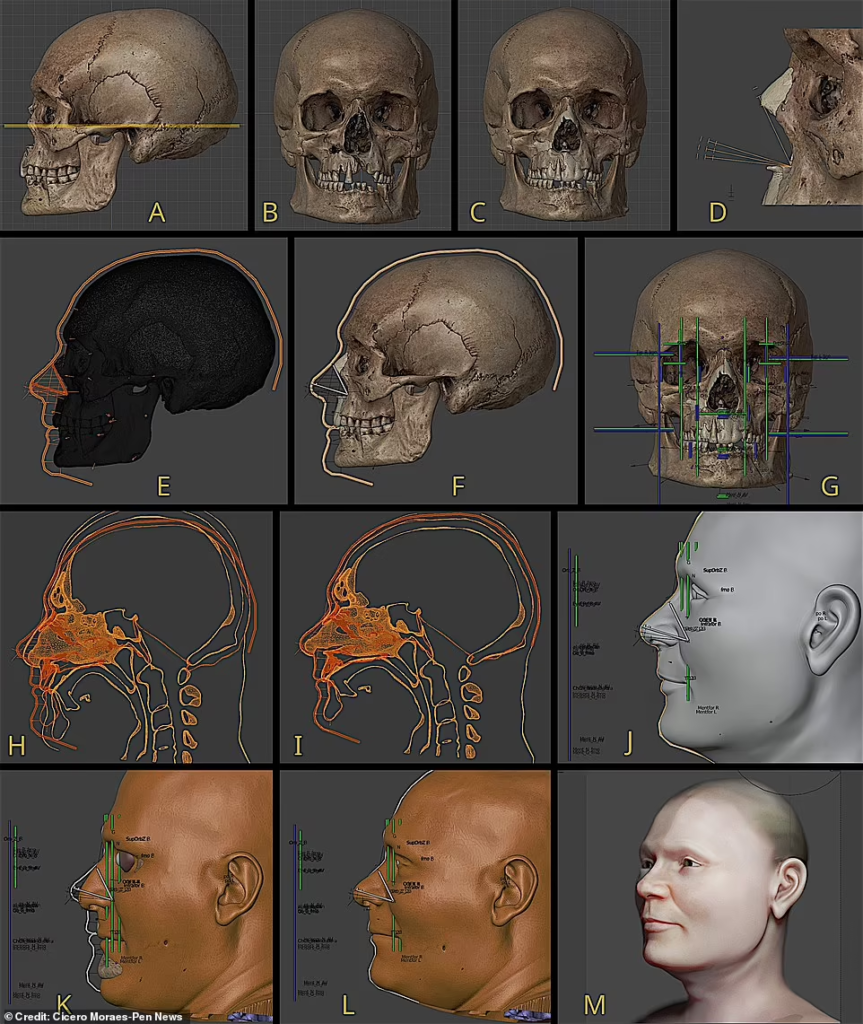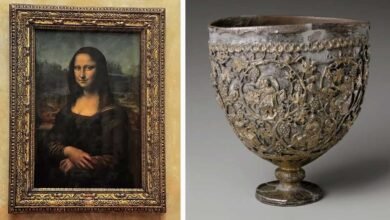

A medieval warrior whose face was split open in one of Europe’s most savage battles has been brought back to life in a stunning recreation


The warrior’s mouth was smashed by an axe, with additional wounds above his left eye and on the left cheek bone probably caused by a pole weapon
In a remarkable feat of historical reconstruction, scientists have brought to life the face of a medieval warrior who fell in one of Europe’s most brutal battles over six centuries ago. The fighter’s skull was discovered in a mass grave near Visby, on the Swedish island of Gotland, where a harrowing clash took place in 1361.


Brazilian graphics expert Cicero Moraes has brought his features to life by importing his skull into a digital interface
During the catastrophic event, a Danish force of around 2,500 experienced mercenaries engaged in a massacre against a rural militia of roughly 2,000 poorly-armed peasants, a significant portion of whom were minors or elderly. The defenders suffered a staggering loss of some 1,800 dead in the merciless encounter.
The warrior in question bore the scars of his valiant struggle, with his mouth brutally injured by an axe blow and additional wounds above his left eye and left cheek bone, possibly inflicted by a pole weapon. Brazilian graphics expert Cicero Moraes masterfully reconstructed his facial features using cutting-edge digital technology.

‘With the basic face defined, we finalized the approximation and generated the most scientific image, in shades of gray, with eyes closed and without hair,’ said Moraes
Moraes explained the process, stating that after preparing the skull, soft tissue thickness markers were strategically placed to approximate skin boundaries on the face. A CT scan of a living donor was then integrated, helping to deform the bones and soft tissue to match the warrior’s features.
While certain aspects, like the size of the nose, mouth, and eyes, relied on statistical projections due to incomplete data from the skull, the final result provides an educated approximation of the warrior’s appearance at the time of his demise.
The exact cause of his death remains uncertain, but the severity of his injuries suggests a fatal blow from the axe could have played a significant role. However, treating such injuries during that era would have been a challenging task given the medical limitations of the time.
The recreated images serve as a poignant reminder of the harsh realities of war. In today’s world, where conflicts continue to unfold, these powerful glimpses into the past resonate deeply, urging us to understand the profound impact of violence on combatants and the lasting effects of historical battles.

The end result is an approximation of what the warrior would have looked like at his time of death. Whether it was a blow from the axe that proved fatal remains unknown

The Battle of Visby was fought between the forces of the Danish king and the Gutnish country yeomen on the island of Gotland in 1361




